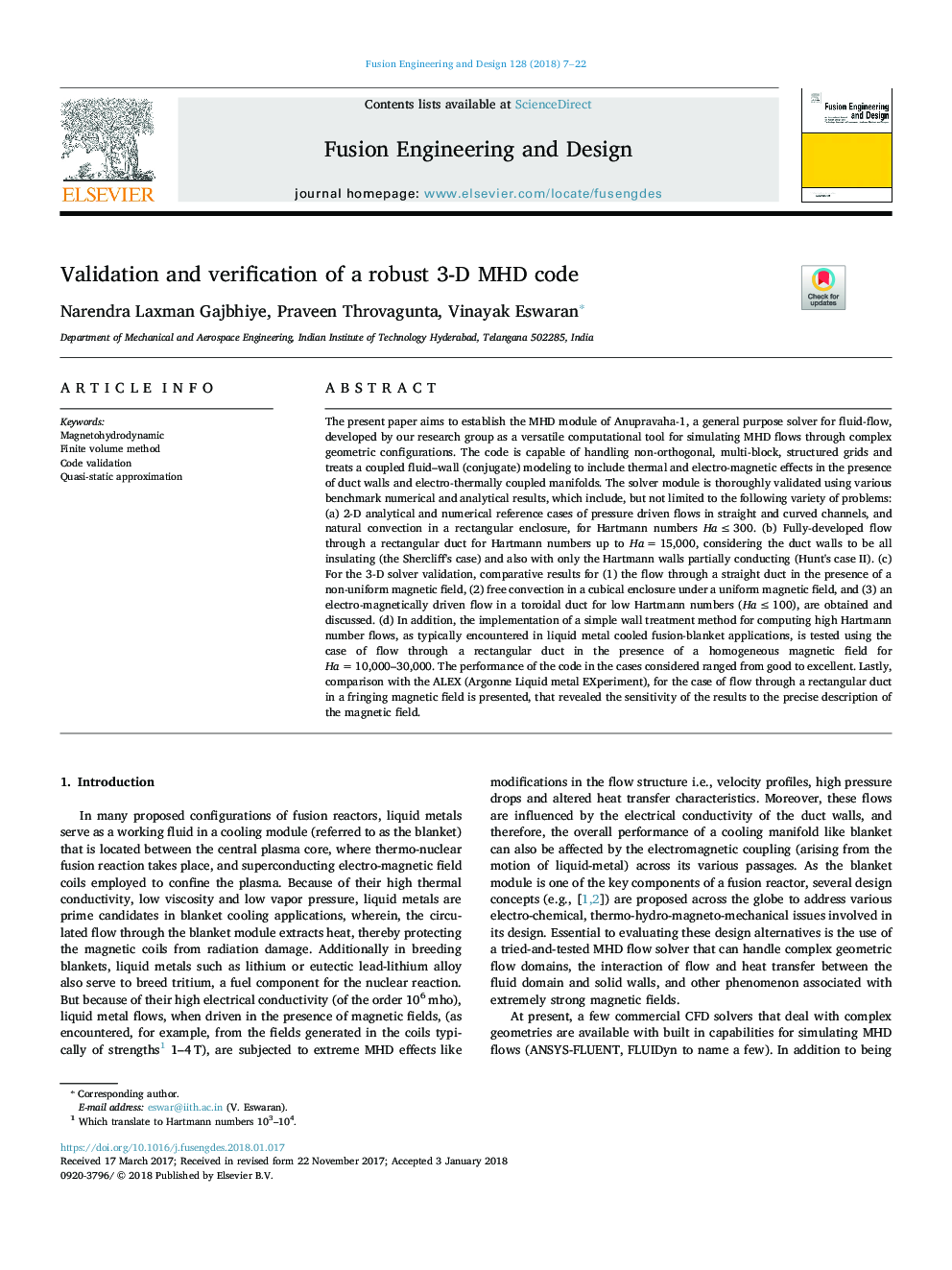| Article ID | Journal | Published Year | Pages | File Type |
|---|---|---|---|---|
| 6743157 | Fusion Engineering and Design | 2018 | 16 Pages |
Abstract
The present paper aims to establish the MHD module of Anupravaha-1, a general purpose solver for fluid-flow, developed by our research group as a versatile computational tool for simulating MHD flows through complex geometric configurations. The code is capable of handling non-orthogonal, multi-block, structured grids and treats a coupled fluid-wall (conjugate) modeling to include thermal and electro-magnetic effects in the presence of duct walls and electro-thermally coupled manifolds. The solver module is thoroughly validated using various benchmark numerical and analytical results, which include, but not limited to the following variety of problems: (a) 2-D analytical and numerical reference cases of pressure driven flows in straight and curved channels, and natural convection in a rectangular enclosure, for Hartmann numbers Haâ¯â¤â¯300. (b) Fully-developed flow through a rectangular duct for Hartmann numbers up to Haâ¯=â¯15,000, considering the duct walls to be all insulating (the Shercliff's case) and also with only the Hartmann walls partially conducting (Hunt's case II). (c) For the 3-D solver validation, comparative results for (1) the flow through a straight duct in the presence of a non-uniform magnetic field, (2) free convection in a cubical enclosure under a uniform magnetic field, and (3) an electro-magnetically driven flow in a toroidal duct for low Hartmann numbers (Haâ¯â¤â¯100), are obtained and discussed. (d) In addition, the implementation of a simple wall treatment method for computing high Hartmann number flows, as typically encountered in liquid metal cooled fusion-blanket applications, is tested using the case of flow through a rectangular duct in the presence of a homogeneous magnetic field for Haâ¯=â¯10,000-30,000. The performance of the code in the cases considered ranged from good to excellent. Lastly, comparison with the ALEX (Argonne Liquid metal EXperiment), for the case of flow through a rectangular duct in a fringing magnetic field is presented, that revealed the sensitivity of the results to the precise description of the magnetic field.
Related Topics
Physical Sciences and Engineering
Energy
Energy Engineering and Power Technology
Authors
Narendra Laxman Gajbhiye, Praveen Throvagunta, Vinayak Eswaran,
